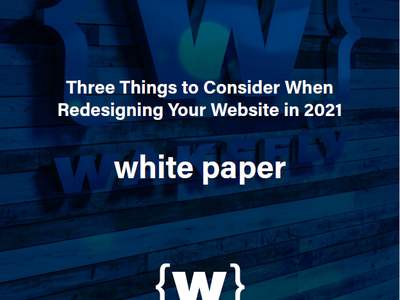Posted on 9/4/2018 in UX and Design
So you’ve got a consistent stream of visitors coming to your website, but how do you get them to convert? All the web traffic in the world doesn’t matter if those users are exiting the site without taking action. Fortunately, there are a number of tactics you can employ that will boost your conversion rate. Below are just some of the ways you can adapt your content and layouts to maximize the ROI of your website.
Use F or Z Pattern Page Layouts:
Numerous eye-tracking studies have been done over the years that have uncovered there are 2 primary ways that human eyes scan and read web pages: the F pattern and the Z pattern.
By laying out your content and your conversion elements in those key locations, it ensures that even with a quick skim, a user will get the gist and see the most important elements of your page.
Capitalize on the FOMO Principle
FOMO stands for “fear of missing out” and it can be a great technique to drive users to take action now so they don’t risk missing out on an opportunity. Some examples of how you can apply this to your website are:
- Show proof that other people are converting: this could be by displaying reviews, testimonials, the number of people who have already signed up/purchased, or even a name/location of a recent buyer.
- Make your offer “exclusive” either as a “limited-time” or “limited stock” opportunity.
- Highlight missed opportunities in your content and couple with a related offer. It makes you look like you are in high demand.
Use Benefit-Driven Headlines
Having a strong headline can make a big difference. It needs to give the user a reason to continue reading. Using a benefit-driven headline will directly let your user know how the content below is going to be important and helpful. It’s also good practice to use numbers in your headline as it helps to set expectations. Look no further than Buzzfeed to see how successful this can be.
Keep Conversion Elements Above the Fold
Users don’t always scroll to the bottom of a web page and if you are placing CTA buttons and forms too low on the page, many people might not even notice them. If you are hoping for a user to interact with an element on your site, make sure that it’s given priority on the page.
Draw Attention to Your CTAs
Use color to draw the eye to your conversion points on the website. It’s important to have a bold accent color that has a stark contrast to the other content on the page. Use buttons instead of links whenever possible as they are more likely to be clicked. CTAs should use clear, simple language that describes the action the user is about to take. Word choice can have a big impact. Well-written microcopy can really boost lead generation and conversions.
Remember that Less is More
Remove any unnecessary barriers to conversion by making things as easy as possible for your users. This means only asking for the minimum amount of information on forms. When you require a lot of information, people are more likely to bounce and not complete the form. If you can autocomplete fields for them so they don’t have to type the information manually, that’s also going to make them more likely to move forward and convert.
Keep your users focused on the right things by limiting the number of things they can do on a given page. A best practice is to have one goal per page. When you have too many conversion points on a single page, they begin to compete against each other.
Create Dedicated Landing Pages
When running a paid campaign, be sure to create dedicated landing pages. You don’t want to drive a user to your homepage. Instead you should be steering them towards the conversion point. Keep your landing pages simple with limited copy that explains the offer, an enticing image, and a form to collect the lead. Remove navigation elements on landing pages to keep the user focused on the goal at hand. This is not the time you want them browsing various areas of your site.
Personalize the Experience
Providing a more personalized experience for your users can positively impact your conversions because it allows you to target specific segments of your audience. Based on the information you have previously collected, you can display unique headings, imagery and CTAs that best match their needs and behaviors. You can also increase conversions by using that information to present recommended products or services to them.
No matter which of the tactics above you try out, the most important thing to do it make sure that you are tracking performance data so you can continue to optimize for what is resonating with your audience. I strongly recommend a/b testing minor adjustments to things like headlines and CTAs so you can really narrow in on what changes are most successful and apply that information to future content and offers. Every website is a little different so continue to test and iterate until you find what works best for you!
Improve Conversion Rates on Your Website
Reach out to us today to see how we can help
Related Articles

Preparing a Website Redesign Budget for 2025: A Step-by-Step Guide
As we approach 2025, businesses are recognizing the necessity of a fresh, user-friendly website to stay competitive in a rapidly evolving digital [...]

Elevating Your Brand: The Transformative Power of Website Design
In the digital age, your website is often the first point of contact between your brand and potential customers. It's not just a platform to showcase [...]

Navigating the Digital Landscape: Website Design Trends of 2024
In the ever-evolving realm of digital innovation, website design trends serve as the compass guiding businesses and creators toward impactful online [...]
